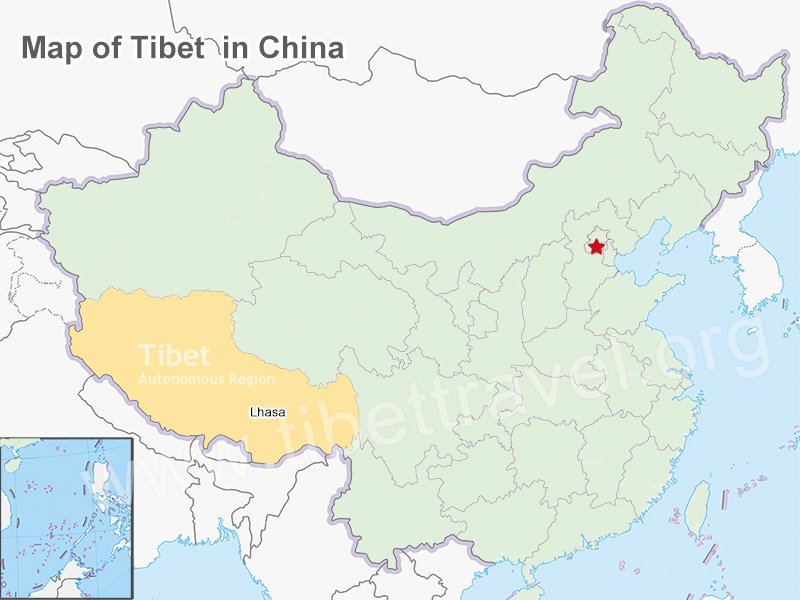Determining the Ideal Season for a Journey to Tibet: A Comprehensive Guide

Tibet, an autonomous region in China, beckons travelers with its awe-inspiring landscapes, rich cultural heritage, and spiritual significance. The best time to visit Tibet depends on various factors such as weather conditions, festivals, and personal preferences. This guide provides a thorough analysis of the optimal time to experience the wonders of Tibet, ensuring a truly memorable and enriching journey.

Spring (March-May)

- Weather: Spring in Tibet is characterized by mild temperatures, making it a pleasant time for outdoor activities. Temperatures typically range from 45°F to 65°F.
- Scenery: The landscape awakens from its winter slumber, painting a vibrant tapestry of colors. Apricot and peach blossoms bloom, while lush greenery adorns the valleys.
- Activities: This season offers a plethora of activities, including hiking, biking, and camping amidst the stunning natural surroundings. Visitors can also witness the bustling energy of the Saga Dawa Festival, a significant Tibetan religious event.
Summer (June-August)
- Weather: Summer brings warmer temperatures, with highs reaching up to 75°F in Lhasa. However, the high altitude ensures that the nights remain cool.
- Rainfall: Monsoon rains occasionally occur during this period, bringing much-needed respite from the summer heat. The rains add a unique charm to the landscape, turning it into a verdant paradise.
- Culture: The summer months are marked by a vibrant cultural calendar. The Shoton Festival, held in Lhasa, showcases traditional Tibetan opera, dance, and music.
Autumn (September-November)
- Weather: Autumn marks the transition from summer to winter, offering pleasant temperatures and clear skies. The average temperature ranges from 40°F to 60°F.
- Foliage: The autumnal hues create a breathtaking spectacle as the leaves of trees transform into shades of gold, crimson, and amber. This season offers unparalleled opportunities for photography.
- Festivals: The annual horse racing festival in Gyantse and the Tsedang Peach Blossom Festival take place during this time, offering a glimpse into Tibet’s unique cultural traditions.
Winter (December-February)
- Weather: Winter brings freezing temperatures, with lows dropping below 23°F in Lhasa. The high altitude intensifies the cold, and snowfall is common in some areas.
- Activities: While the weather may be harsh, winter offers unique experiences such as ice trekking, skiing, and yak riding. The frozen lakes and snow-capped mountains create a mesmerizing winter wonderland.
- Festivals: The Tibetan New Year, known as Losar, is celebrated during the winter months, showcasing traditional Tibetan customs and rituals.
Choosing the Best Time for Your Visit:
When planning your trip to Tibet, consider the following factors to align your visit with your interests and preferences:
- Weather: If you prefer warm and sunny conditions, spring and summer are ideal. For those who enjoy cooler temperatures and occasional rain, autumn is a good choice. Winter offers a unique experience, but be prepared for frigid temperatures and potential travel disruptions due to snow.
- Festivals: If you wish to immerse yourself in Tibetan culture and witness traditional festivals, plan your trip accordingly. The Saga Dawa Festival in spring, the Shoton Festival in summer, and Losar in winter are some of the most significant events.
- Activities: Determine the activities you wish to engage in. If outdoor pursuits such as hiking and biking are your priorities, spring, summer, and autumn are suitable. For winter sports enthusiasts, winter is the time to visit.
Additional Tips for a Smooth Journey:
- Altitude Sickness: Tibet is situated at a high altitude, which can cause altitude sickness. Acclimatize gradually by spending a few days in lower-altitude areas before ascending to higher elevations.
- Permits: Obtain the necessary travel permits and visas well in advance to avoid delays.
- Respect Local Customs: Familiarize yourself with Tibetan customs and traditions, and be respectful of local beliefs and practices.
- Pack Appropriately: Pack layers of clothing to accommodate the varying temperatures throughout the day. Also, include sunscreen, sunglasses, and a hat to protect yourself from the intense high-altitude sun.
By carefully planning your trip to Tibet, you can ensure a truly unforgettable experience, filled with awe-inspiring sights, rich cultural encounters, and lasting memories.